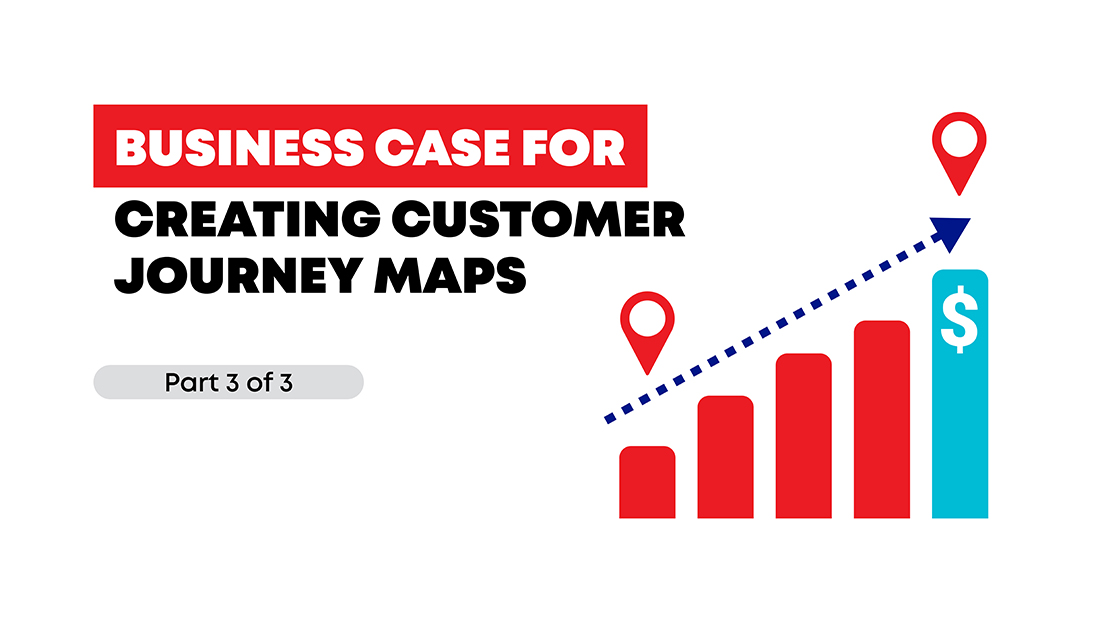
The Customer Journey Mapping Series:
1. Stop losing customers to bad experiences
2. How to create a customer journey map
3. The business case for creating customer journey maps – You are here
This is part three of our three-part series diving into the world of customer journey mapping and its crucial role in delivering an exceptional customer experience (CX). In a fast-paced business environment, it’s easy to overlook small but significant issues that can lead to losing customers. By understanding the customer journey, you can prevent these unnoticed pain points. This series explores what a customer journey map is, how to create one, and why it’s essential.
This article will cover:
- Reasons to create a map
- Measuring success
“Companies that use customer journey maps are 200% more likely to outperform their competitors:
Source: Gartner’s Customer Experience Management Survey
SEVEN REASONS WHY YOU SHOULD CREATE A CUSTOM JOURNEY MAP
1. Enhanced customer understanding
A journey map provides a comprehensive view of your customer’s experience, helping you understand their needs, expectations, and behaviors. This deeper insight allows you to connect with your customers on a more personal level, and as technology advances, they expect more tailored and personalized interactions.
2. Improved customer satisfaction
By pinpointing and addressing pain points, you can improve the overall customer experience. This results in higher customer satisfaction and loyalty, as customers feel heard and appreciated. In fact, 86% of consumers would leave a brand after as few as two bad experiences. Retaining existing customers is also far easier and more cost-effective than acquiring new ones.
3. Increased efficiency
Mapping the customer journey helps streamline processes by identifying areas of friction, which leads to smoother interactions and greater operational efficiency. This not only enhances the customer experience but also makes each touchpoint more enjoyable and efficient for your team to manage.
4. Better decision-making
Customer journey maps provide critical insights that guide strategic decisions, ensuring they are grounded in real customer needs and experiences. Many companies lack a unified view of their customers and make decisions in silos, which can lead to disjointed actions that negatively impact the overall customer experience.
5. Enhanced cross-functional collaboration
Journey mapping encourages collaboration across departments, aligning teams with the common goal of improving the customer experience. This cross-functional unity creates more cohesive efforts, improves efficiencies, and ultimately leads to a better, more seamless customer journey.
6. Prioritized improvements
By visualizing the entire customer journey, you can identify and prioritize the most crucial areas for improvement. This targeted approach ensures resources are focused on changes that will have the most significant impact, driving meaningful enhancements in the customer experience.
7. Competitive advantage
A well-mapped and optimized customer journey gives your business a clear competitive edge. Delivering superior customer experiences sets you apart from competitors, helping to build brand loyalty and attract more dedicated customers in the long run.
HOW TO MEASURE SUCCESS
There are several ways to measure the success of your customer journey mapping process.
Experience quality measurements
- Net Promoter Scores (NPS), Customer Satisfaction Scores (CSAT), and Customer Effort Scores (CES): Collect these metrics to gauge how customers perceive your brand and their experience.
- Use a combination of these scores to gain a comprehensive understanding of your customer experience quality.
Journey and touchpoint measurements
- Transactional measurements: Track key metrics like lost customer rate, new customer acquisition, and interaction feedback to monitor customer movement throughout their journey.
- Touchpoint performance: Measure success by tracking the percentage of wins vs. losses, the time it takes to onboard new customers, and the response time for customer requests or issue resolution.
Employee experience measurements
- Gather employee satisfaction scores and engagement metrics to assess how the journey mapping process impacts your internal teams. A positive employee experience often translates to a better customer experience.
Overall business measurements
- Look at broader business metrics such as acquisition rates, retention rates, and customer lifetime value (CLV) to understand the long-term impact of your customer journey mapping efforts on your business growth.

KEY TAKAWAY
If you want your teams to truly understand what matters most to your customers—their joys and frustrations—communicating this through a visual representation is far more effective than words or text alone. Customer journey mapping is a critical tool for improving customer experience, fueling business growth, guiding strategic decisions, and empowering your employees. By visualizing and understanding the customer journey, your business can create a more seamless, personalized, and satisfying experience. Many organizations unknowingly operate in silos, missing that customer-centric alignment, and while this may go unnoticed internally, it’s clearly felt by customers. Journey mapping helps break down these barriers and keeps everyone focused on what truly matters—the customer.
Interested in learning more about how customer journey mapping can help your business? Give us a call or connect with me on LinkedIn.
The Customer Journey Mapping Series:
1. Stop losing customers to bad experiences
2. How to create a customer journey map
3. The business case for creating journey maps – You are here

Jen Halvorson
With her passion of understanding and crafting experiences, Jen works with clients to integrate digital communication strategies into their overall marketing matrix. From defining the usability standards of simple websites to full digital communication plans, Jen defines appropriate solutions to help clients meet their business objectives. With over 20 years of experience, Jen believes that effective interactive work must be relevant and intuitive. She works closely with the entire digital team in architecting and validating cohesive user-focused solutions that work seamlessly into the user’s journey with a brand. She also really enjoys the salted caramel cupcakes from Hy-Vee.
